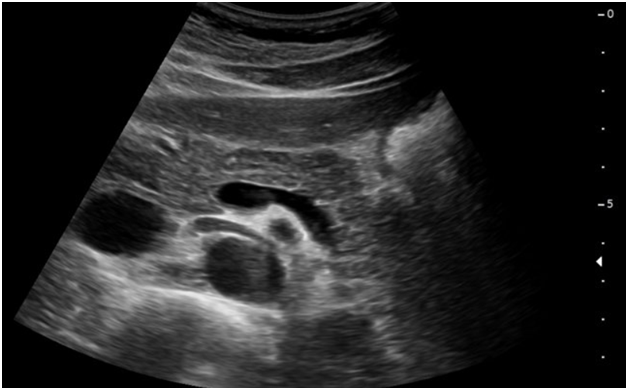Pancreatic Disorders That Can Go Undetected
What is pancreatic disorder?
The pancreas is a flat leaf-like organ located in the upperabdominal region, near the gallbladder and liver, and just behind the stomach. It produces important enzymes and hormones that help in the digestion of food and in regulating blood sugar levels. Therefore, certain medical conditions, such as acute and chronic pancreatitis, hereditary pancreatitis, and pancreatic cancer, can affect the normal production of these enzymes and hormones, and can take an overall deleterious toll on the body, and produce life-threatening conditions as well if they are left untreated.In the United States, the annual incidence rate of pancreatitis is about 4.9 to 35 per 100,000 population(Santhi Swaroop Vege, 2021).
What are some common disorders of the pancreas?
The common disorders include (COMMON DISORDERS OF THE PANCREAS, n.d.):
- Acute Pancreatitis: As the name suggests, acute pancreatitis is the sudden inflammation of the pancreas that is characterized by severe pain in the upper abdominal region along with fever, bloating, diarrhea, nausea, and vomiting. The pain may last for several days, and the condition can subside through symptomatic relief by taking medication and often recover completely. In the U.S. people get this usually because of gallstones. However, other causes such as excessive alcohol consumption, obesity, trauma, electrolyte imbalance, hormonal imbalance, or other unknown causes may also be behind it.
- Chronic Pancreatitis: It is the progressive degeneration of the pancreas and is characterized by symptoms such as pain in the upper abdominal region and diarrhea, because of which it is often confused with acute pancreatitis. Commonly, men of ages 30-40 have this. As degeneration of the pancreas is involved, therefore the affected person will show signs of weight loss, malnutrition, and diabetes mellitus.
- Hereditary Pancreatitis:This occurs because of inheriting pancreatic or intestinal dysfunctionality.Often it occurs because of having hereditary cystic fibrosis.The affected person is likely to get multiple episodes of acute pancreatitis before the age of 30, which progresses gradually towards chronic pancreatitisand is likely to have malnutrition, weight loss, diarrhea, abdominal pain, and diabetes mellitus.
- Pancreatic Cancer: It develops insidiously and is often diagnosed through imaging tests mainly when surgical intervention is ineffective. It is the fourth most common cancer that affects men and the fifth most common cancer occurring in women, accounting for annually 37,000 cases in the U.S.It is resistant to chemotherapy and radiation therapy. A classical symptom of pancreatic cancer is yellow skin discoloration.
What are the risk factors of pancreatic disorder?
The risk factors of pancreatic disorders include (Staff, 2021):
- Chronic excessive alcohol consumption
- Obesity
- High lipid levels
- Family history of pancreatic disorders
- Cystic fibrosis
- Smoking cigarette
- Diabetes
What are the common symptoms of pancreatic disorder?
Symptoms of acute pancreatitis include (Staff, 2021):
- Severe upper abdominal pain that may radiate towards the back
- Tenderness when the abdomen is touched
- Diarrhea
- Fever
- Nausea & Vomiting
- Heart palpitations.
Symptoms of chronic pancreatitis include:
- Upper abdominal pain that may worsen after eating food
- Smelly oily stools
- Weight loss, without even trying it
What are some common complications?
They include(Staff, 2021):
- Kidney failure
- Difficulty in breathing properly
- Pseudocysts
- Pancreatic bacterial infection
- Diabetes
- Malnutrition
- Pancreatic cancer
Why is screening with ultrasound necessary for pancreatic disorder
The pancreas is in the upper abdominal region just behind the stomach, near the gallbladder. As it is located internally, therefore endoscopic ultrasound is done to assess the extent of disease condition and for evaluation of pancreatic cancer and cysts. It can also help in the direct delivery of medication in the pancreas or draining the pseudocysts (Staff, Endoscopic ultrasound, 2020).
Why is an early screening of pancreatic disorder important?
Early screening of pancreatic disorder, especially in vulnerable individuals who have a family history of pancreatic-related medical diseases, is important to check the pancreas for any sign of disorder development. In advanced stages, permanent damage to the pancreas will lead to permanent complications such as kidney failure, diabetes, malnutrition, and ultimately pancreatic cancer. It is essential to screen these disorders in the early stages so that appropriate treatment can be provided. Otherwise, in advanced stages medications are given just to improve quality of life as the damage becomes incurable.
What are the benefits of annual pancreatic screening with ultrasound?
Endoscopic ultrasound is currently our best option for screening for pancreatic cancer (Alberto Larghi, 2009). Especially people who have a high risk for pancreatic cancer are screened with it as a preventative method so that with early detection, severe consequences of the condition can be avoided with the timely dispensation of treatment.
